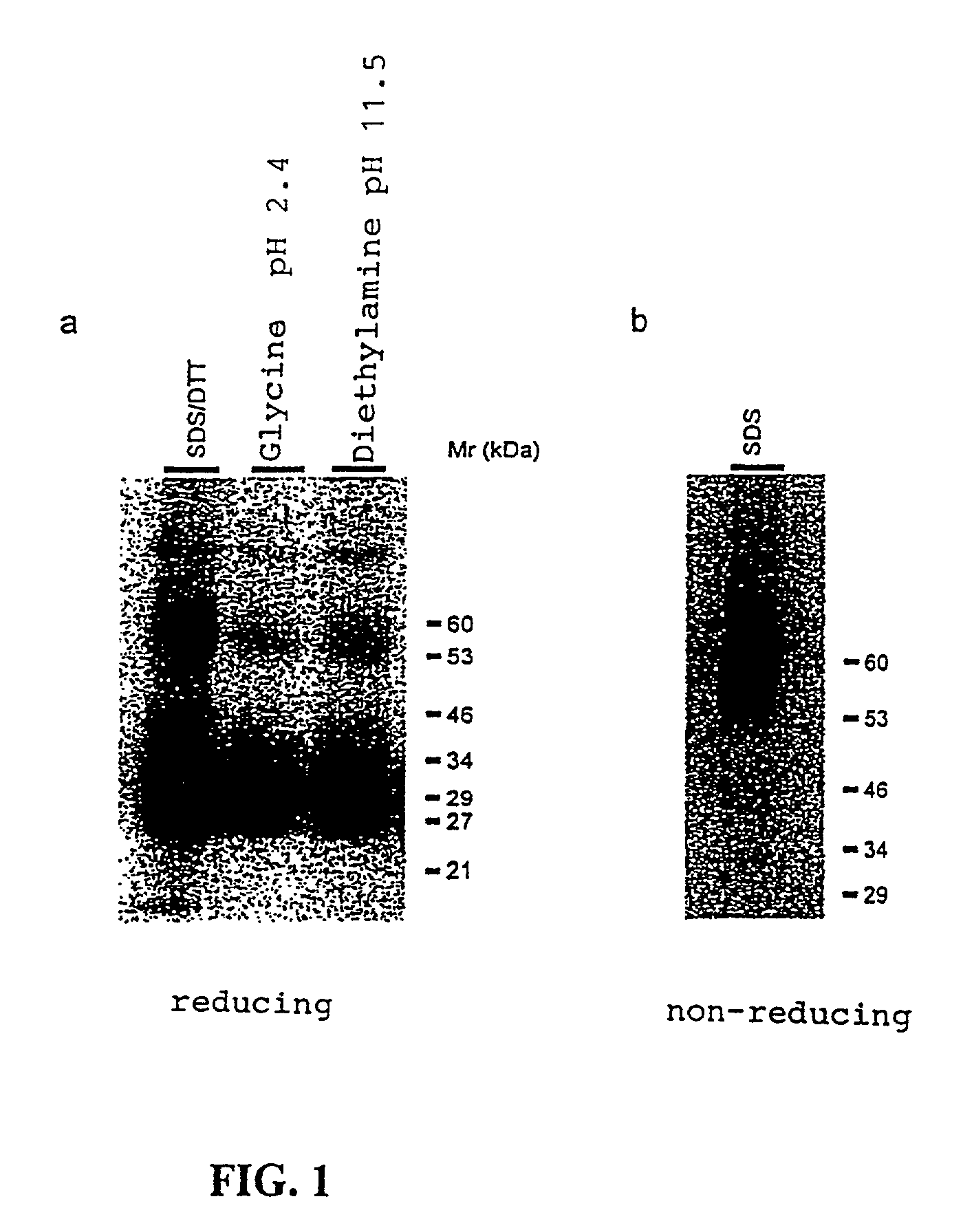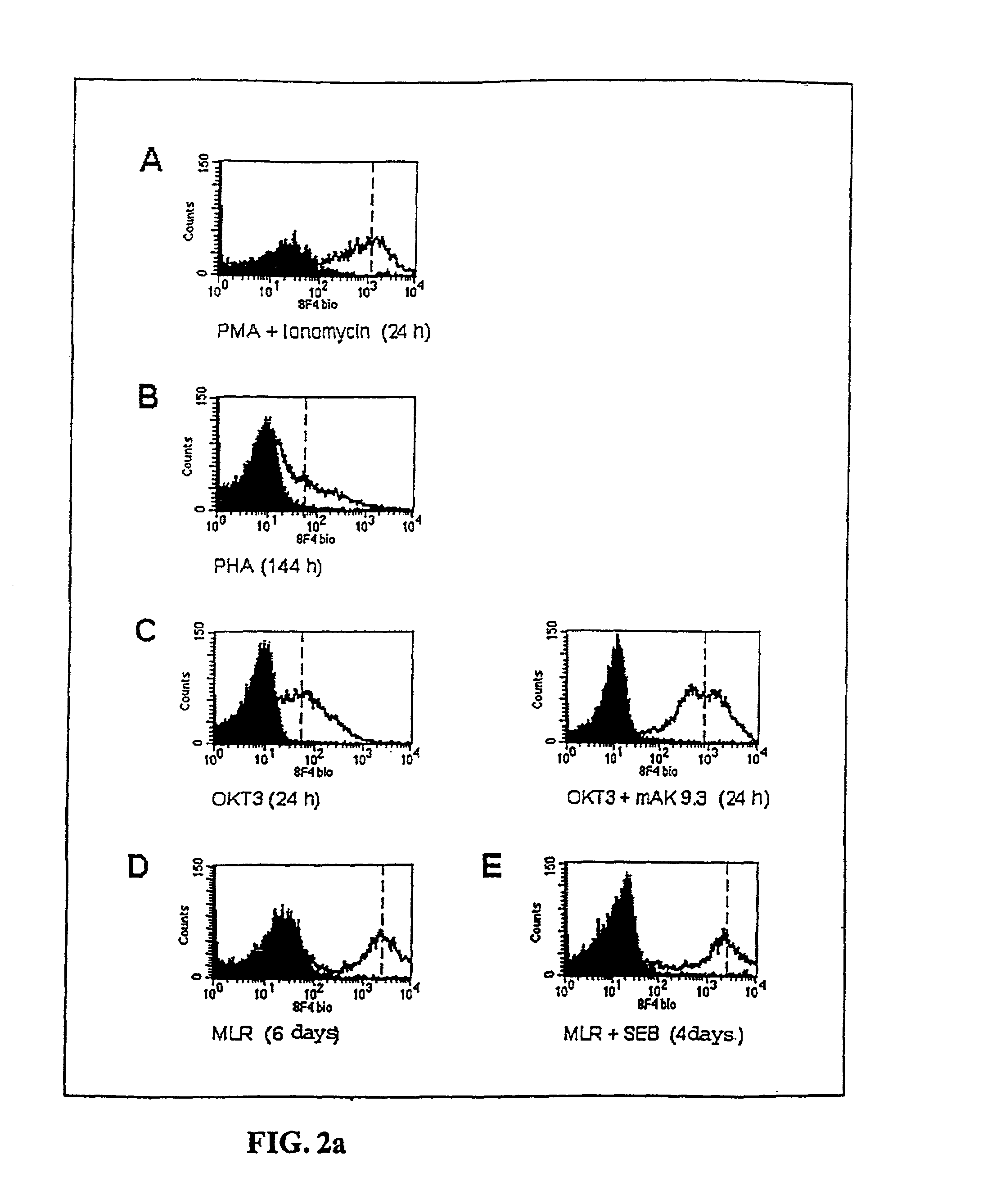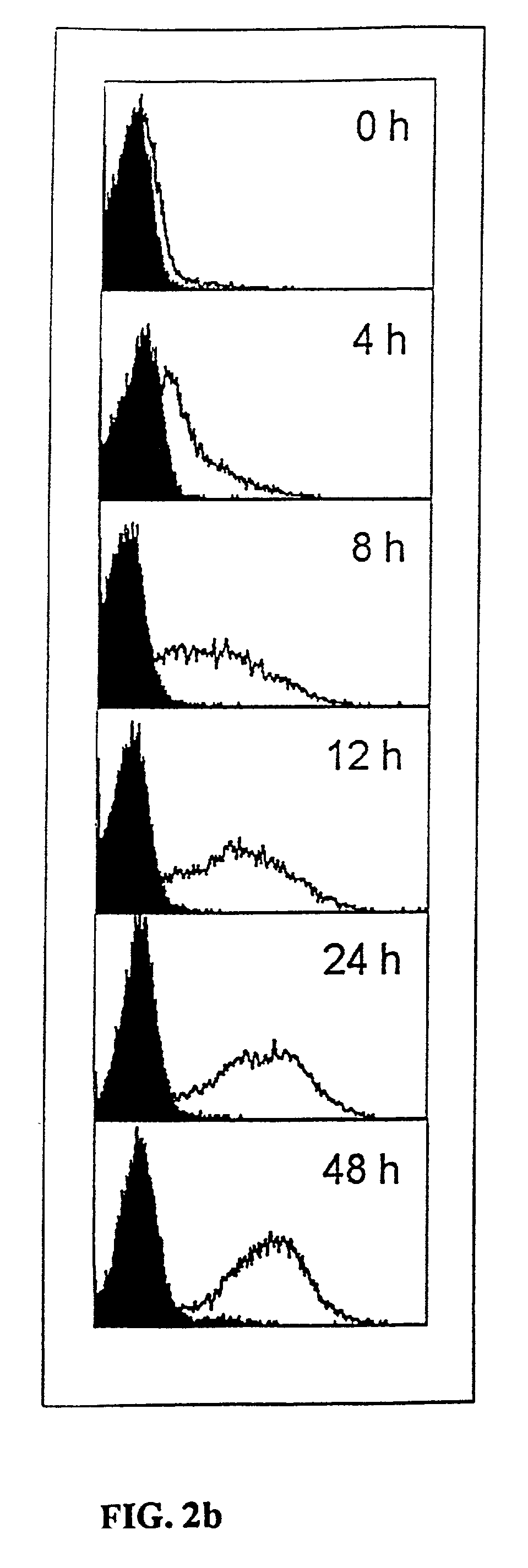Methods for treatment of asthmatic disorders using a monoclonal antibody to 8F4 polypeptide
a monoclonal antibody and asthmatic disorder technology, applied in the field of asthmatic disorders, can solve the problems of insufficient activation of t lymphocytes, insufficient recognition of antigen by t-cell receptor alone, and insufficient immune response, and achieve the effect of strong costimulation effect on the central function of t lymphocytes
- Summary
- Abstract
- Description
- Claims
- Application Information
AI Technical Summary
Benefits of technology
Problems solved by technology
Method used
Image
Examples
example 2
Immunoprecipitation of the 8F4 Antigen
[0056]Surface molecules from activated human T cells were iodinated with 125I by standard methods and immunoprecipitated with the antibody 8F4 by standard methods; cf. Goding, Monoclonal Antibodies: Principle and Practice, Academic Press, London, 1996. The antibody for the immunoprecipitation was coupled by the method of Schneider et al., Journal of Biological Chemistry 257 (1982), 10766–10769, to protein G (Pharmacia, Freiburg) (8F4 matrix). The matrix was washed as described by Schneider et al., see above. The immunoprecipitated 8F4 molecule was analyzed for its molecular mass in an SDS-PAGE (non-reduced and reduced) in a conventional way; Goding, see above.
example 3
[0057]The 8F4-carrying T cells were analysed in flow cytometry by standard methods; cf. Shapiro, Practical Flow Cytometry, Wiley-Liss, New York, 1995.
[0058]Exemplary Embodiment 3.1: Flow Cytometry After Induction of the 8F4 Antigen on CD4+ T Cells.
[0059]CD4+ T cells from peripheral blood were stimulated with various agents in a conventional way, and investigated for expression of the 8F4 molecule in flow cytometry by a conventional method. The activation time for the T cells was between 24 hours and 144 hours with the various agents. Modes of activation: phorbol myristate acetate (PMA; 33 ng / ml), ionomycin (200 ng / ml), phytohaemagglutinin (PHA 1.5 mg / ml), OKT3 (monoclonal antibody against CD3), mixed lymphocyte reaction (MLR, between 50,000 CD4+ T cells and 100,000 B cells), mAk 9.3 (monoclonal antibody against CD28), staphylococcal enterotoxin B (SEB, 0.1 ng / ml). Analysis revealed that various stimuli are suitable for inducing the 8F4 molecule on T cells, but the expr...
example 4
Localization of 8F4-positive Cells in the Tonsil
[0068]Tonsillar tissue in frozen sections was stained with the 8F4 antibody in the APAAP technique (alkaline phosphatase-anti-alkaline phosphatase) by standard methods. 8F4+ cells were found preferentially in the germinal centre of the tonsils, but also in part in the T-cell zone of the tonsils.
PUM
| Property | Measurement | Unit |
|---|---|---|
| Atomic weight | aaaaa | aaaaa |
| Atomic weight | aaaaa | aaaaa |
| Atomic weight | aaaaa | aaaaa |
Abstract
Description
Claims
Application Information
 Login to View More
Login to View More - R&D
- Intellectual Property
- Life Sciences
- Materials
- Tech Scout
- Unparalleled Data Quality
- Higher Quality Content
- 60% Fewer Hallucinations
Browse by: Latest US Patents, China's latest patents, Technical Efficacy Thesaurus, Application Domain, Technology Topic, Popular Technical Reports.
© 2025 PatSnap. All rights reserved.Legal|Privacy policy|Modern Slavery Act Transparency Statement|Sitemap|About US| Contact US: help@patsnap.com



